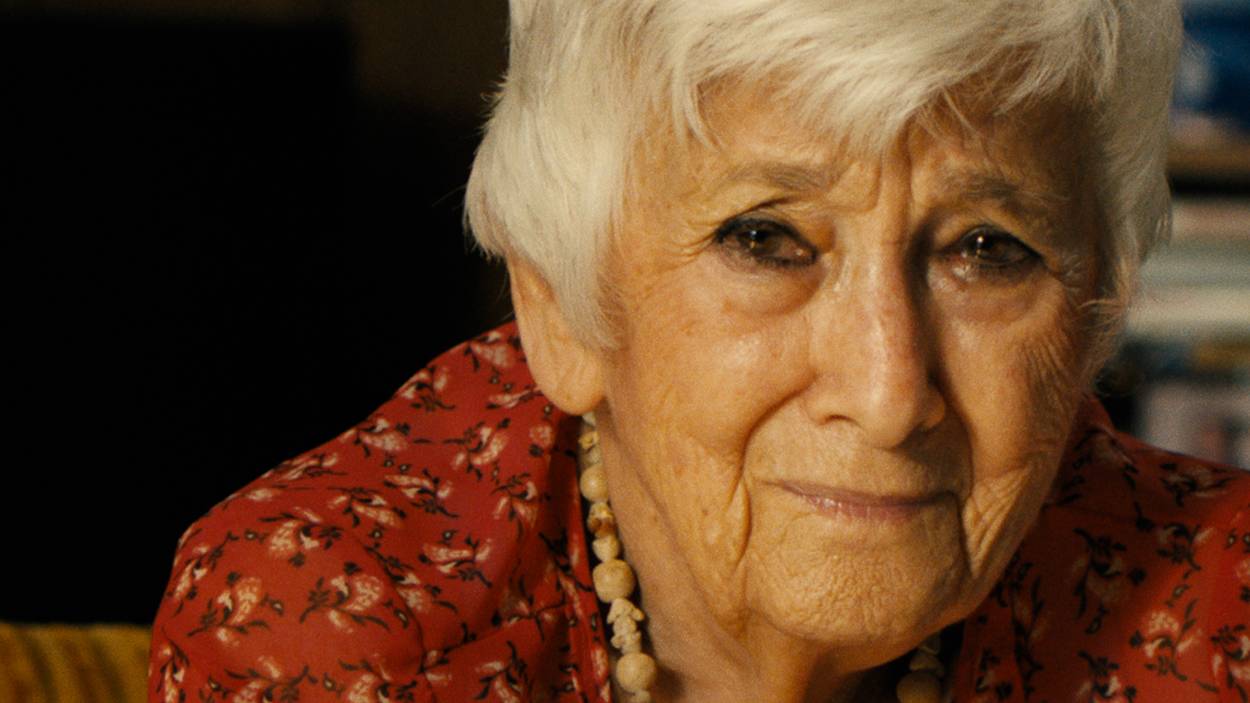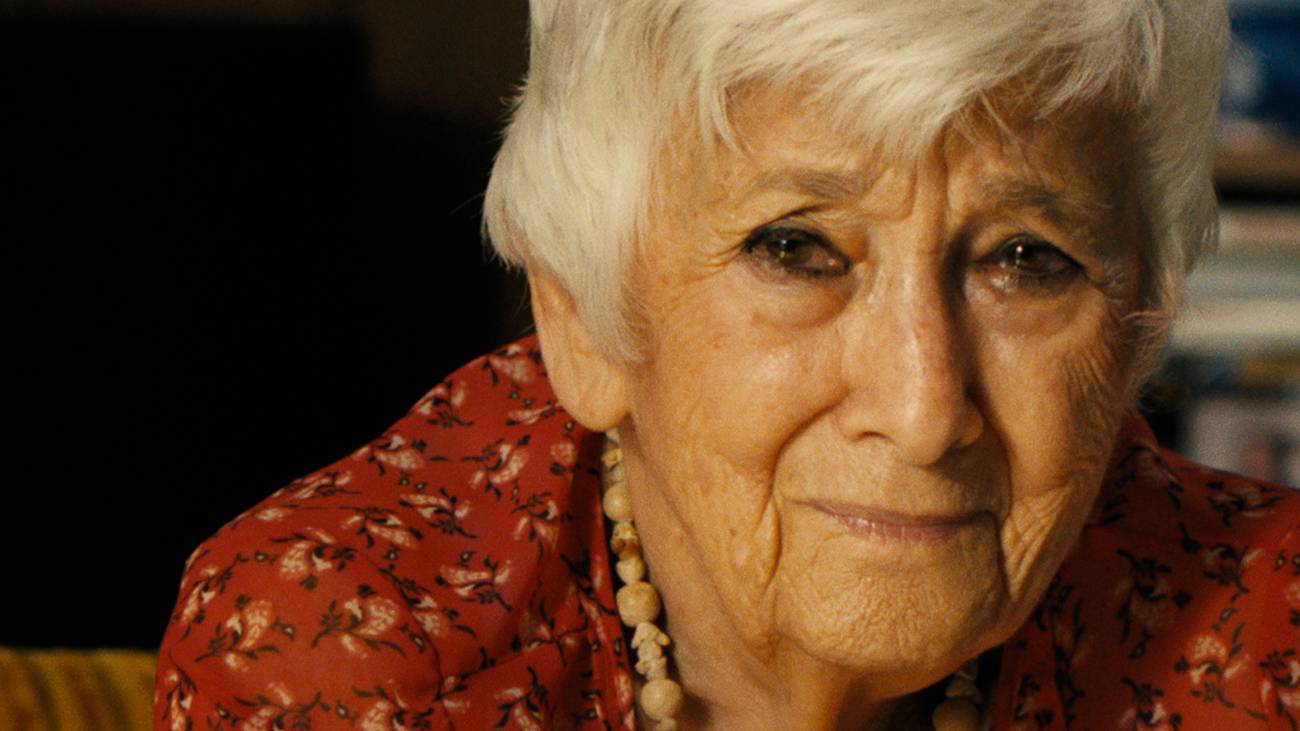Once I’m Gone
A new film, Daniel Lombroso’s ‘Nina & Irena,’ captures the challenges of talking about the Holocaust with family members who survived it

Courtesy Daniel Lombroso

Courtesy Daniel Lombroso

Courtesy Daniel Lombroso

Courtesy Daniel Lombroso
The story goes that Chaim, on a freezing night in Auschwitz in 1944, stole a few things from the kitchen—a potato, some salt—and led a Pesach Seder by memory. Discovered by the camp guards, he was whipped and left bleeding in the snow.
Another story: Helena, a young and blond child in Warsaw, hid munitions in a suitcase to help supply the ghetto’s small cache before its uprising.
Chaim and Helena were my grandparents, but I heard neither of these stories from them. I was too afraid to ask and they, busy in the fullness of their American lives—the grandkids and great-grandkids being bar mitzvahed, the picnics at their tiny upstate bungalow, so many births it became hard to remember the names of all the far-flung cousins—might not have wanted to answer. Now they can’t.
Daniel Lombroso’s new documentary, Nina & Irena, an understated and elegant short film released by The New Yorker, is premised upon this intergenerational quiet—the silence that can settle between survivors and their children and grandchildren. “I didn’t talk about that time of my life,” Daniel’s grandmother Nina says of her wartime childhood. “First of all no one was interested. Two, I felt that if I start telling my story the way it really happened, it was too depressing or too horrifying for the kids when they were small. So I felt, OK, sometime later. And later never came.” The film, for Daniel and Nina, is finally an occasion to talk. He sits in her Long Island home and asks her to tell him about her life.
This conversation is layered over archival footage from World War II and the family’s home movies, these various histories held together by Nina’s narration and Gil Talmi’s elegiac score. Presented by Errol Morris, Lombroso’s film relies on one of that auteur’s central techniques: He sits across from his subject—his grandmother—and presses her, gently but persistently, to delve more deeply into her memory and into the past. Lombroso’s eye for detail, meanwhile, gives the film its still and pensive power: his grandmother’s sandaled foot against the background of her bright living room carpet; a vased bouquet of sunflowers set beside the kitchen window; a piano packed with so many family photos that the frames now spill across the bench; these images collect force and meaning, coalescing into a moving portrayal of Nina and her life.
For Nina, holding forth from her living room chair—“Oh hello, ladies and gentlemen,” she says to the camera, her white hair cut short, a chunky necklace dangling over her red blouse—the war was a series of miraculous evasions, largely the result of getting the right papers at the right time. But she lost a sister, Irena—a girl a few years her senior who went to check in on some family in a nearby town and never returned. “We got a note from my sister saying I’m going towards Lviv to see if there is anybody left,” Nina tells Daniel. “That’s the end. We never heard about her. We never heard from her.”
This disappearance—and the near-century that has passed without discussing it—is one of the central subjects of the film. “Many times after the war,” Nina says, “if I would see somebody that looked like her, I would follow them thinking maybe it’s her. But after a while, you know, you stop. And that’s it.”
Nina narrates much of her life in this way, describing traumas and griefs that slowly calcified into bearable facts. “Would I want her to be alive?” she says of Irena. “Definitely. Would I want her to be in my life? Yes. But what can I do about it? There’s nothing I can do. What’s gone is gone.”
Irena’s haunting absence is contrasted with Nina’s bright presence, a life that Lombroso captures in rich detail: bridge games with friends, yoga classes, visits with family, the careful attendance of home. It is this contrast between the firmly repressed past and the fullness of the present that animates the film, as Lombroso braids Nina’s narration of the war with loving and lovely shots of her late life: Nina filling a bird feeder, or talking to friends, or reading the newspaper. Such scenes return Nina’s testimony to the habitus of her home, and frame her recollections as a single aspect of a larger world—one that is vibrant but also shaded by grief.
Lombroso’s success at presenting his grandmother this way—as more than an object of history—is one of the major accomplishments of the film. “Schindler’s List and Shoah educated a generation,” Lombroso told me over the phone. “And I grew up being educated by those stories. And it was sort of a cliche that at school, you know, they would wheel in a TV and play a video of a survivor. And it was powerful, but when something starts to feel trite it starts to lose its power.” Lombroso sought a new way of approaching the Holocaust and its legacy in America, and one that might capture the power of what remains unspoken, even after decades and even between loved ones.
Such considerations come at a moment when the last bearers of firsthand accounts of the Jewish genocide in Europe are disappearing. “If there are questions you want to ask me, ask me now,” Nina told Daniel, the statement now serving as the film’s epigraph. “Once I’m gone it’s hard to get me.” When the last survivors pass away, their memories will be replaced by the historical records they’ve left behind. Archives like the Shoah Foundation are enormously important—are labors of incredible skill and care that stand as bulwarks against forgetting. But they also anchor a genre that lacks the power it once had. Claude Lanzmann’s Shoah, which Lombroso cited as the apex of this genre of Holocaust testimony, is almost 40 years old, and even when Schindler’s List first debuted it was possible for Jerry and his girlfriend to neck the whole way through. For filmmakers reckoning with the legacies and afterlives of the Holocaust, this will remain a challenge.
One can imagine a world in which Lombroso missed his chance to ask his grandmother about her childhood and sister—a world in which all that remained, at the end of Nina’s days, is the barest of historical facts: Nina had a sister and that sister disappeared. The film attends to the urgency of having those conversations, as well as the difficulty of doing so. In one exchange, Nina tells him: “I feel the way I feel, but that’s nobody’s business how I feel, but I don’t analyze it. That is what it is.” In another exchange she says: “I didn’t dwell on it while it was happening. That’s what was happening. I’m a very straightforward person. That’s what was happening and you have to accept it. You don’t like it that’s too bad.”
It is hard to get history to speak, and harder still if you wait too long. Lombroso created, poignantly and powerfully, the conditions for that conversation with his grandmother. “We have time together still,” he writes in an essay published alongside the film, “and I had better not waste it by sitting in silence.” The film is a testament to time spent well.
For those, like me, who failed to ask their grandparents about their childhoods while they could, this is the thing that aches—that I now encounter my grandparents’ experiences of the war as objects of history, unmoored from the world they built together. I can ask my parents about these stories, or access the testimonial footage my grandparents dutifully recorded in their old age, but I can no longer find them seated on the screened porch of their sagging bungalow, or in the Brooklyn living room amid shelves bending from seforim and family photos. I cannot ask my grandfather about that Seder in Auschwitz—if they drank water as if it was wine, or if they reclined like kings in the cold of their cabin. I cannot ask my grandmother if the guns were heavy in that suitcase, or what she covered them with. I cannot ask if they felt more proud and holy than afraid, or if the only thing they knew in those days was fear.
David Sugarman is Tablet’s Deputy Literary Editor and Special Projects Editor.